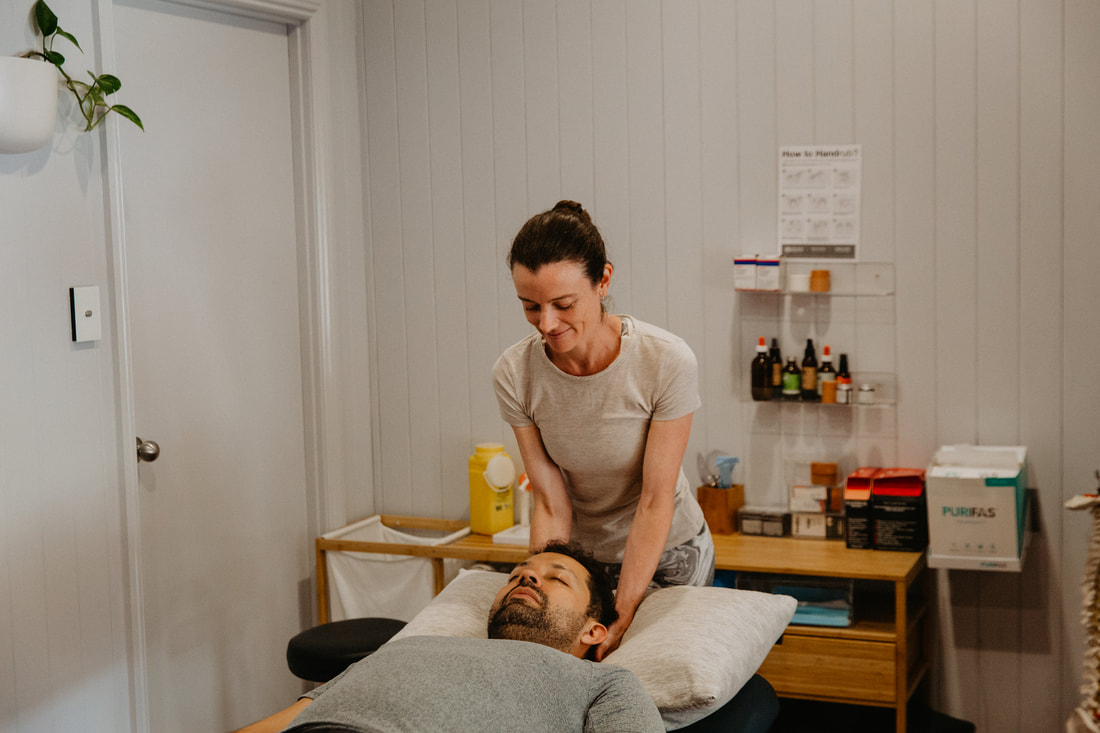Atlantoaxial Instability Physiotherapy Brisbane southside.
What is Atlantoaxial Instability?
Atlantoaxial instability (AAI) is a medical condition characterised by excessive movement or instability of the joint between the first and second cervical vertebrae, known as the atlas (C1) and axis (C2). This instability can lead to a range of neurological and musculoskeletal symptoms and may require treatment to prevent complications.
What causes Atlantoaxial Instability?
AAI can have various causes, including congenital abnormalities in the structure of the cervical spine, genetic conditions like Down syndrome, trauma (such as whiplash injuries or fractures), rheumatoid arthritis, or other connective tissue disorders.
What are the symptoms of Atlantoaxial Instability?
The symptoms of Atlantoaxial Instability can vary but often include:
How is Atlantoaxial Instability diagnosed?
Diagnosis typically involves a thorough medical history, physical examination, and imaging studies. X-rays, computed tomography (CT) scans, and magnetic resonance imaging (MRI) may be used to assess the structure and stability of the atlantoaxial joint.
What is the treatment for Atlantoaxial Instability?
The treatment of Atlantoaxial Instability depends on the underlying cause, the severity of symptoms, and the individual's overall health. Options may include:
What is the prognosis for Atlantoaxial Instability?
The prognosis for individuals with AAI can vary based on the cause, the degree of instability, and the success of treatment. Many individuals experience significant improvement in symptoms with appropriate management, while others may have persistent issues.
How can physiotherapy help with Atlantoaxial Instability?
Physiotherapy can play a supportive role in managing Atlantoaxial Instability (AAI), although it is important to note that the primary treatment for severe AAI typically involves surgical intervention. However, physiotherapy can be valuable in improving neck strength, stability, and range of motion, as well as managing pain and discomfort for individuals with mild to moderate AAI. Here's how physiotherapy can help with Atlantoaxial Instability:
It's important to emphasise that the approach to physiotherapy for AAI should be individualised and guided by a healthcare professional familiar with the condition. The severity of AAI, the underlying cause, and the individual's overall health will all influence the appropriate treatment plan. Additionally, physiotherapy should be coordinated with the healthcare team, including specialists such as neurosurgeons or orthopaedic surgeons, to ensure that the treatment approach is safe and effective.
If you or a loved one has questions about Atlantoaxial Instability and how our physiotherapists might be able to help please call us on 07 3706 3407 or email [email protected]. We would love to work with you!
Atlantoaxial instability (AAI) is a medical condition characterised by excessive movement or instability of the joint between the first and second cervical vertebrae, known as the atlas (C1) and axis (C2). This instability can lead to a range of neurological and musculoskeletal symptoms and may require treatment to prevent complications.
What causes Atlantoaxial Instability?
AAI can have various causes, including congenital abnormalities in the structure of the cervical spine, genetic conditions like Down syndrome, trauma (such as whiplash injuries or fractures), rheumatoid arthritis, or other connective tissue disorders.
What are the symptoms of Atlantoaxial Instability?
The symptoms of Atlantoaxial Instability can vary but often include:
- Neck pain and stiffness
- Headaches, especially at the base of the skull
- Difficulty with balance and coordination
- Sensory disturbances, such as tingling or numbness in the extremities.
- Muscle weakness or spasms
- Problems with swallowing or breathing
- Visual disturbances
- In severe cases, it can lead to neurological deficits or even paralysis.
How is Atlantoaxial Instability diagnosed?
Diagnosis typically involves a thorough medical history, physical examination, and imaging studies. X-rays, computed tomography (CT) scans, and magnetic resonance imaging (MRI) may be used to assess the structure and stability of the atlantoaxial joint.
What is the treatment for Atlantoaxial Instability?
The treatment of Atlantoaxial Instability depends on the underlying cause, the severity of symptoms, and the individual's overall health. Options may include:
- Conservative Management: In some cases, conservative approaches may be appropriate, including rest, activity modification, and the use of a cervical collar or brace to restrict movement and provide support.
- Surgical Intervention: For severe cases or when conservative measures are ineffective, surgery may be considered. Surgical options may include fusion surgery or stabilisation using instrumentation to prevent excessive movement of the C1-C2 joint.
- Management of Underlying Conditions: If AAI is associated with an underlying condition such as rheumatoid arthritis, managing that condition is essential to prevent further instability.
What is the prognosis for Atlantoaxial Instability?
The prognosis for individuals with AAI can vary based on the cause, the degree of instability, and the success of treatment. Many individuals experience significant improvement in symptoms with appropriate management, while others may have persistent issues.
How can physiotherapy help with Atlantoaxial Instability?
Physiotherapy can play a supportive role in managing Atlantoaxial Instability (AAI), although it is important to note that the primary treatment for severe AAI typically involves surgical intervention. However, physiotherapy can be valuable in improving neck strength, stability, and range of motion, as well as managing pain and discomfort for individuals with mild to moderate AAI. Here's how physiotherapy can help with Atlantoaxial Instability:
- Neck Strengthening Exercises: Physiotherapists can prescribe specific exercises to strengthen the muscles supporting the neck and cervical spine. Strengthening these muscles can help enhance stability and reduce the risk of excessive movement in the atlantoaxial joint.
- Range of Motion Exercises: Gentle range of motion exercises can help maintain or improve neck flexibility. These exercises should be tailored to the individual's condition and performed within their pain tolerance to prevent further injury.
- Postural Education: Physiotherapists can provide guidance on maintaining proper neck and head posture during daily activities. Correcting poor posture is essential to reduce strain on the cervical spine and minimise the risk of exacerbating symptoms.
- Pain Management: If an individual with AAI experiences pain, physiotherapists can employ various pain management techniques, such as heat therapy, cold therapy, manual therapy, and modalities like ultrasound or electrical stimulation.
- Stability Training: Physiotherapists may incorporate exercises and techniques to improve stability and balance, which can be particularly important for individuals with AAI to reduce the risk of falls and injuries.
- Activity Modification: Physiotherapists can work with individuals to identify and modify activities that may exacerbate symptoms. Teaching adaptive techniques and suggesting lifestyle adjustments can help prevent further strain on the neck and cervical spine.
- Education and Self-Management: Education is a crucial aspect of physiotherapy for AAI. Physiotherapists can help individuals understand their condition, identify triggers, and develop self-management strategies to minimise symptoms and prevent further injury.
- Assistive Devices: In some cases, physiotherapists may recommend assistive devices such as cervical collars or braces to provide additional support and stability to the neck. These devices are typically used on a temporary basis and may be part of the overall management plan.
It's important to emphasise that the approach to physiotherapy for AAI should be individualised and guided by a healthcare professional familiar with the condition. The severity of AAI, the underlying cause, and the individual's overall health will all influence the appropriate treatment plan. Additionally, physiotherapy should be coordinated with the healthcare team, including specialists such as neurosurgeons or orthopaedic surgeons, to ensure that the treatment approach is safe and effective.
If you or a loved one has questions about Atlantoaxial Instability and how our physiotherapists might be able to help please call us on 07 3706 3407 or email [email protected]. We would love to work with you!
Who to book in with:
Yulia Khasyanova
|
Mauricio Bara
|


